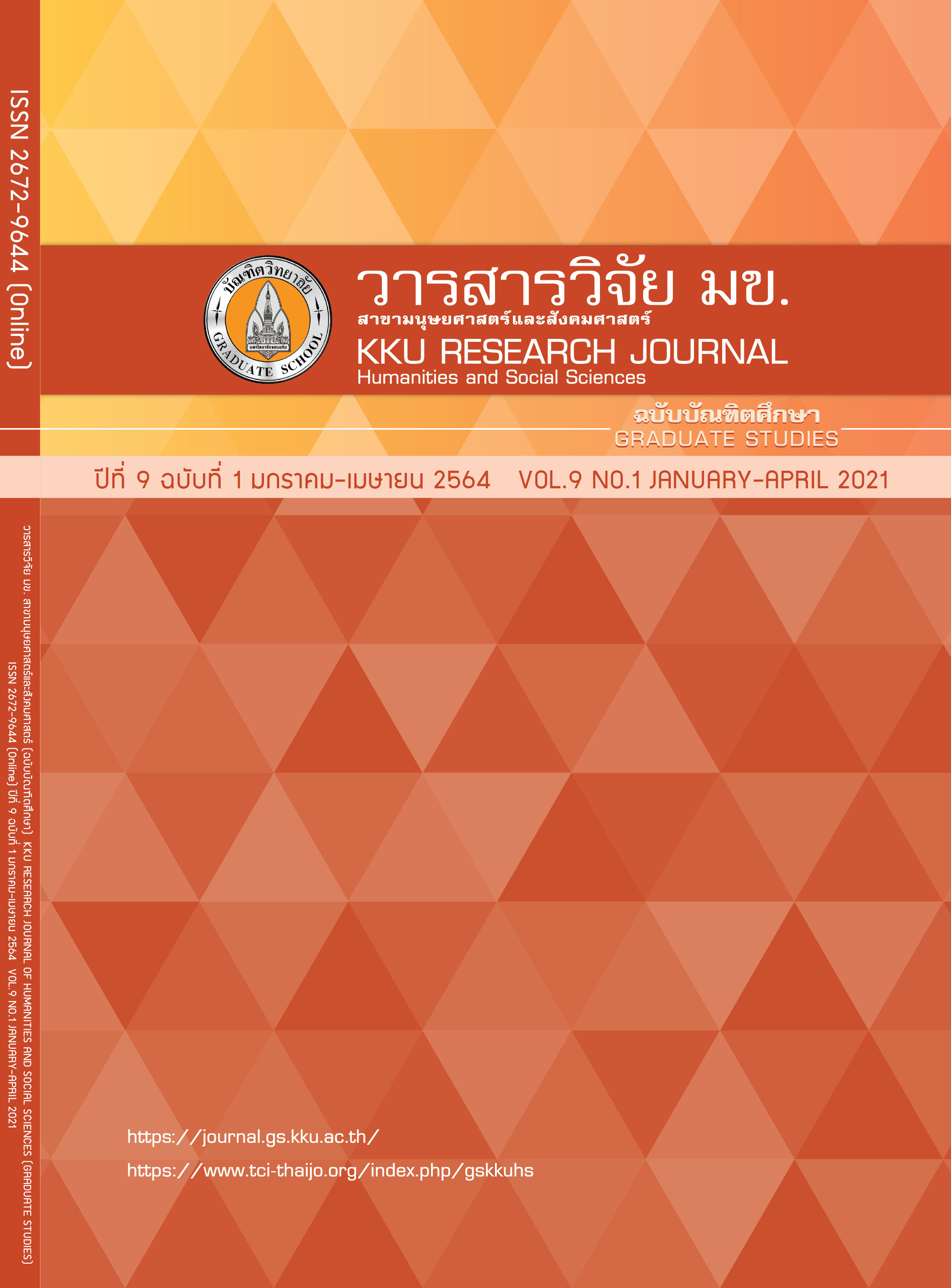Innovative Behavior of Commercial Bank Employees in Khon Kaen Province
Keywords:
Innovative behavior, Commercial bank employees, Commercial bankAbstract
The objectives of this study were to (1) create the instruments for measuring innovative behavior, (2) study innovative behavior of commercial bank employees in Khon Kaen province. The study was conducted through both qualitative and quantitative research method for creating the tools to collect the data including the questionnaires with 321 samples-commercial bank employees in Khon Kaen province. The research findings revealed that in the part of analyzing through Exploratory Factor Analysis can be divided into 4 elements: 1) seeking new knowledge and concepts 2) applying knowledge in work 3) sharing knowledge and acceptance of adoption and 4) preserving knowledge and supporting new concepts as for the study of innovative behavior, it was found that the samples had a high level of opinions about innovative behavior. Except for the elements of knowledge preservation and supporting new concepts with moderate levels.
References
Chumkesornkulkit P. Innovative work Behavior: Concept, Antecedents and Challenges. Journal of Behavioral Science for Development. 2018; 10(1): 25-41. Thai.
Piyapan T. Delve into the development of modern digital banking mechanisms (Part 1) [Internet]. 2017 [updated 2017 Jul 10; cited 2017 May 30]. Available from: http://www.krungsri.com/bank/th/plearn-plearn/inside-digital-banking-era-part-1.html. Thai.
Thiratanapong N. Digital Banking helps reduce interest and increase access to credit for SMEs. Good SMES customers receive lower interest rates and unsecured and request a loan [Internet]. 2018 [updated 2018 Jul 8; cited 2018 May 30]. Available from: https://www.bot.or.th/Thai/ResearchAndPublications/DocLib_/Article_8May 2018. pdf. Thai.
Scott SG, Bruce RA. Determinants of innovative behavior: A path model of individual innovation in the workplace. Academy of Management Journal. 1994; 37(1): 580-607.
Janssen O. Job demands, perceptions of effort-reward fairness and innovative work behavior. Journal of Occupational and Organizational Psychology. 2000; 73(3): 287-302.
De Jong JP, Den Hartog DN. How leaders influence employees' innovative behavior. European Journal of innovation management. 2007; 10(1): 41-64.
Olham GR, Cummings A. Employee creativity: personal and contextual factors at work. Academic Management Journal. 1996; 39(3): 607-34.
Janssen O. How fairness perceptions make innovative behavior more or less stressful. Journal of Organizational Behavior. 2004; 25(2): 201-15.
De Jong JP, Den Hartog DN. Measuring innovative work behavior. Creativity and Innovation Management. 2010; 19(1): 23-36.
De Spiegelaere S, Gyes GV, Tom VT, Greet VH. Innovative work behavior: concept & measurement. Gedrag en Organisatie. 2012; 27(2): 139-56.
Kleysen RF, Street CT. Toward a multi-dimensional measure of individual innovative behavior. Journal of Intellectual Capital. 2001; 2(3): 284-96.
Jumpadee N. Effect of self-efficacy, creative styles and individual factor to innovative work behavior: a case study of a Software house [MA Thesis]. Bangkok: Thammasat University; 2011. Thai.
Phothisita C. Science and Art of Qualitative Research. 3rd ed. Bangkok: Amarin Printing & Publishing Public; 2007. Thai.
Hair JF. Multivariate Data Analysis: A global perspective. Upper Saddle River, N.J: Pearson Education; 2010.
Yamane T. Statistics: An introductory analysis. 3rd ed. New York: Harper and Row Publication; 1970.
Vanichbuncha K. How to use SPSS for Windows to data analysis. 13th ed. Bangkok: Chulalongkorn University Printing House; 2013. Thai.




